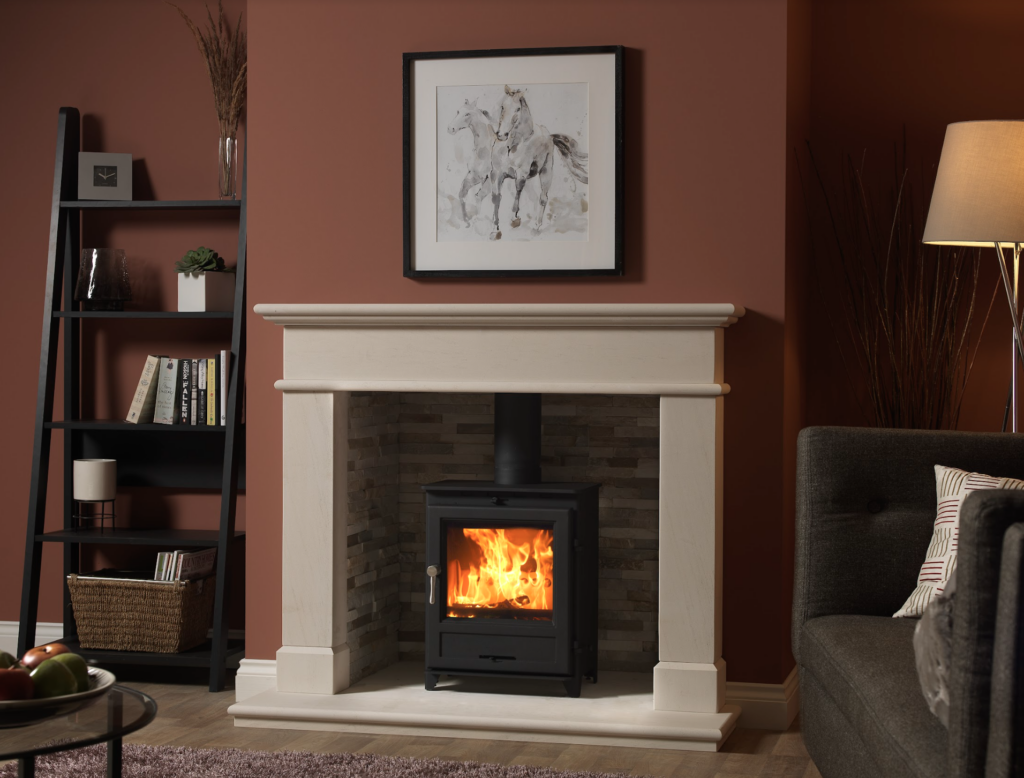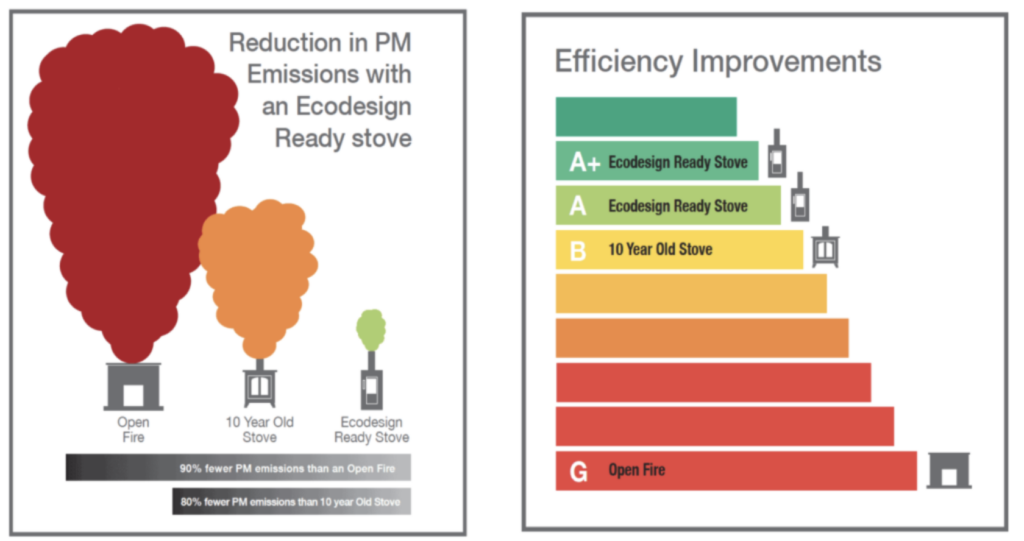A modern wood-burning stove, which is Ecodesign and clearSkies compliant, is so very much more than just a large metal box that burns wood. They are a result of years of development, testing and research to make sure they produce an incredibly clean, sustainable heating source.
This is the main reason why they are totally incomparable to old stoves or open fires.

Below is an insight into some of the measurements that demonstrate how efficient and clean our wood-burning stoves are. In this study, we look specifically at our Fireline range, which are clearSkies Level 5 certified, Ecodesign compliant, and DEFRA exempt.
Total Efficiency to EN13240/13229
Total efficiency relates to the overall effectiveness of the stove in converting the kW content of fuel into heat that warms your room. This must be measured by an independent test house to BS EN 13240 or 13229 to allow it to be comparable with other stoves.
Total efficiency is not a measure of clean-burning in any way. It’s possible to have a stove which has a high thermal efficiency that burns with plenty of smoke, or a clean burning stove with low efficiency. Fireline has worked especially hard to produce a range of stoves that are both highly efficient and very clean burning. As you can see below all the Fireline stoves exceed the minimum efficiency by Ecodesign.

Carbon Monoxide Emissions (CO)
The UK limit for CO emissions historically is 1%, but this is a high threshold in reality. Some other EU countries and Ecodesign state that the average shall not exceed 0.12% over the duration of three back-to-back tests, a reduction of more than 88%. With this in mind, we have worked for over 10 years to lower the CO emissions of all our stoves to within this 0.12% limit, and this has been achieved with no stove producing more than 0.1% under accredited independent lab testing.

Organic Gaseous Carbon Emissions (OGC)
Organic Gaseous Carbon (OGC) compounds are particles of unburned fuel. OGCs add to air pollution and are linked to numerous human-health issues. OCG is to be governed at a maximum average of 200 mg/Nm3 during three back to back lab tests. All our current stoves exceed this vital requirement for wood burning by an average of 57% and no less than 86% for mineral fuels.

Particulate Matter Emissions (PM)
Particulate Matter includes microscopic soot, ash dust and fuel particles, which can be transported from the flue into the outside environment. Only initially regulated in UK DEFRA smoke control areas until Ecodesign rules came into force in 2022. They now impose a limit of 40 mg/Nm3 that must not be exceeded during three back to back lab tests. As you can see below, all the range fall well below the 40 mg/Nm3 limit.

NOx Emissions
Emissions of nitric oxide and nitrogen dioxide, known as NOx emissions, were unregulated in the UK until 2022. Now Ecodesign imposes a 200 mg/Nm3 limit on all solid fuel burners as the average of three consecutive tests in an accredited laboratory.

It’s easy to see how clean an Ecodesgn wood-burning stove is. The diagram below shows this in simple terms and the fact that an Ecodesign stove has around 90% fewer PM emissions than an open fire and 80% fewer emissions than a 10+ year old stove.

Lowering emissions from burning wood, or any other similar activity for that matter, will help reduce your overall carbon footprint, which is key in helping drive down the dramatic impact of global climate change.








